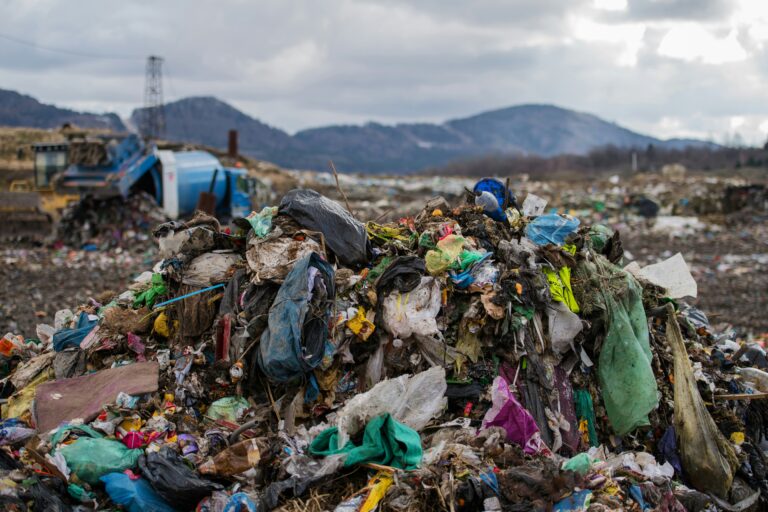Food fight: Organic-waste rules are latest recycling failure
By D. Dowd Muska | February 14, 2025
Draconian climate policies are wholly unwelcome in Washington, D.C., under the new Republican administration, so expect the greenest state and local governments to fight back in 2025. One area likely to draw significant interest: food profligacy. The Golden State’s mandate that “every jurisdiction … provide organic-waste collection services to all residents and businesses” was signed into law in 2016, with implementation rules approved in 2020.
What the Los Angeles Times called “the most dramatic shift in California’s solid waste policy since the introduction of curbside recycling in the 1990s” targets “emissions of short-lived climate pollutants” by forcing residents and business to segregate their kitchen scraps so that the refuse can be hauled to “digestion facilities that create biofuel and electricity” and compost “facilities that make soil amendments.”
The sweeping scheme – its goal is to “(r)educe organic waste disposal 75% by 2025” – has admirers far beyond California’s borders. But before the bandwagon gets rolling, a look at previous recycling ambitions might be helpful.
In the 1960s and 1970s, the concept of “Spaceship Earth,” popularized by Kenneth E. Boulding, captured elites’ attention. The post-World War II celebration of abundance (nuclear electricity would be “too cheap to meter”) received a rude comeuppance, replaced by an assiduous focus on limits and scarcity. Opinion makers came to believe that the United States could no longer be a “throwaway society.”
As a result, the nation needed to embrace the stewardship and savings promised by a “circular economy.” Congress passed the Resource Conservation and Recovery Act in 1976, and in 1980 the Philadelphia suburb of Woodbury, N.J., became the first city to enact mandatory curbside recycling.
In 1987, the sad wandering of the Mobro 4000 trash-filled barge helped eco-activists push the notion that Americans would soon be overrun by our garbage. Recycling laws, ordinances, subsidies and incentives were widely adopted. Captain Planet and the Planeteers taught children that “Gaia, the spirit of the Earth,” could “no longer stand the terrible destruction plaguing our planet.” Recycling metal, glass, paper and plastic became a national religion.
Or did it? Data certainly don’t confirm the claim. A quarter-century after Woodbury started it all, the U.S. Government Accountability Office found that the two best guesses for the share of “municipal solid waste … recycled” were 31% and 29%. And the Environmental Protection Agency’s goal of 35% by 2008 remains unattained. The bureaucracy’s latest estimate, covering 2018, puts the national recycling rate at 32.1%.
Most disturbingly, the “worst” trash is recycled the least. In 2022, a “comprehensive assessment of plastic waste in the United States,” conducted by the National Renewable Energy Laboratory, discovered that “approximately 86% was landfilled, 9% was combusted and 5% was recycled.” In December, CBS News released the results of a devastating investigation. Using super-glued AirTags, 57 plastic cups “placed in labeled recycling bins” at Starbucks franchises from coast to coast were tracked. Thirty-six provided “reliable location information,” and of the cohort, “32 did not go to a recycling facility,” but rather landfills, incinerators and waste-transfer stations, “where trash is compacted before being sent to landfills or incinerators.”

From an environmental perspective, the case for recycling was always shaky. The planet is not “running out of resources” because mankind constantly finds new, better, and market-driven methods to extract, process, and reuse natural materials. There is no landfill crisis, and there never was. Air and water quality are improving. Recycling is fine as long as it’s market driven, by the way.
But recycling’s mightiest opponent is economic reality. In a 1996 cover story for The New York Times Magazine, journalist John Tierney blasphemed that “the simplest and cheapest option is usually to bury garbage in an environmentally safe landfill.” (In 2015, nothing has changed, per Tierney: “Despite decades of exhortations and mandates, it’s still typically more expensive for municipalities to recycle household waste than to send it to a landfill.”)
Consider the recent conundrum faced by a local government in the Jacksonville, Fla., metro area. As reported by WJAX-TV, in 2023, Clay County’s “recycling processor raised the … processing fee from a credit of $6/ton to a charge of $85/ton.”
The “excessive and unprecedented” reversal induced officials to cancel curbside recycling the following year. It’s easy to find similar examples. Campbell County, Wyo., walked away in June. Commission Chairman Del Shelstad: “We feel like we want to quit throwing taxpayers’ dollars at this, it’s costing us more than it’s worth, and it’s becoming more cumbersome every year.” Cities doing the same within the last 12 months included: Quincy, Ill.; Portage, Ind.; Mount Holly, N.C.; York, S.C.; Gretna, La.; and Winter Garden, Fla. (On Election Day, voters in Chesapeake, Va., overwhelmingly rejected the return of curbside recycling.)
Give food-waste crusaders credit. They’re not letting finances or history get in the way of the newest recycling fad. California’s startup woes are of no concern, either. Eighteen months into implementation, the Little Hoover Commission documented the difficulties of mandating the repurposing “organics.”
Not only did the dictate disproportionately “disadvantage rural Californians,” it ignored industry’s “operational perspective” and conflicted with the state’s prioritization of “zero-emission energy.” Due to unachievable targets and local governments’ compliance challenges, the panel recommended “a temporary pause,” to make “changes in law and regulation,” appropriate “additional funding” and create “a more holistic approach to reducing landfill methane emissions.”
The situation doesn’t appear to be getting better. In February, a Chula Vista environmental official told the Associated Press that it is “really expensive” to both transport and spread the compost the city is required to consume. In September, Agromin’s CEO lamented that obtaining permits for “compost centers is no small feat.” (Odor is NIMBYists’ strongest weapon.)
Economist Steven Landsburg considers “naive environmentalism” a “force-fed potpourri of myth, superstition and ritual that has much in common with the least reputable varieties of religious fundamentalism.” Recycling is one of the Gaia cult’s sacred rites. But faith-based public policy has many unintended consequences.
Dowd Muska is a researcher and writer who studies public policy from the limited-government perspective. A veteran of several think tanks, he writes a column and publishes other content at No Dowd About It.
